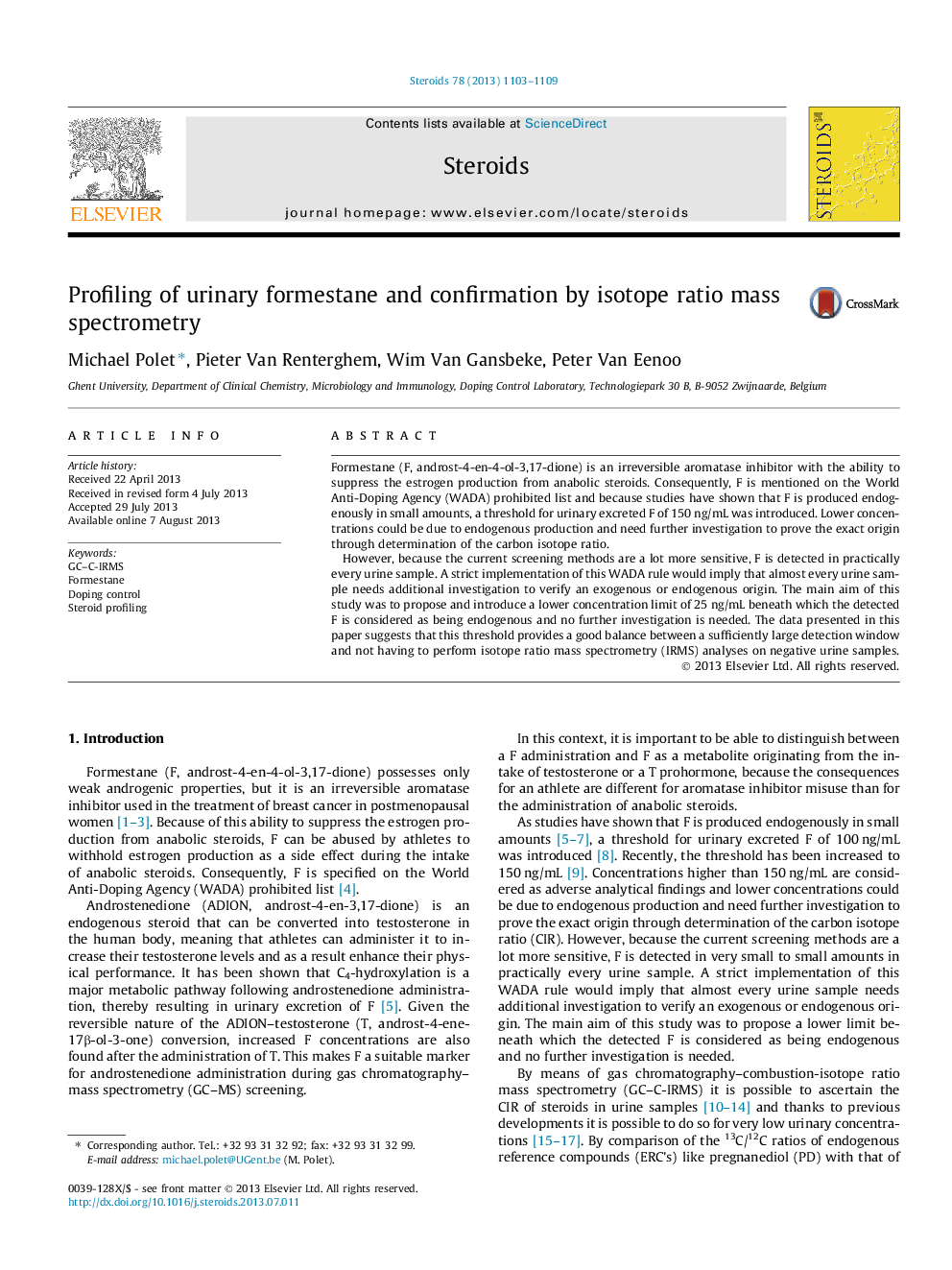| Article ID | Journal | Published Year | Pages | File Type |
|---|---|---|---|---|
| 2028179 | Steroids | 2013 | 7 Pages |
•Introduction of a lower concentration limit of 25 ng/mL.•A reference population was used to determine endogenous 13C values for formestane.•Excretion studies with testosterone and androstenedione.
Formestane (F, androst-4-en-4-ol-3,17-dione) is an irreversible aromatase inhibitor with the ability to suppress the estrogen production from anabolic steroids. Consequently, F is mentioned on the World Anti-Doping Agency (WADA) prohibited list and because studies have shown that F is produced endogenously in small amounts, a threshold for urinary excreted F of 150 ng/mL was introduced. Lower concentrations could be due to endogenous production and need further investigation to prove the exact origin through determination of the carbon isotope ratio.However, because the current screening methods are a lot more sensitive, F is detected in practically every urine sample. A strict implementation of this WADA rule would imply that almost every urine sample needs additional investigation to verify an exogenous or endogenous origin. The main aim of this study was to propose and introduce a lower concentration limit of 25 ng/mL beneath which the detected F is considered as being endogenous and no further investigation is needed. The data presented in this paper suggests that this threshold provides a good balance between a sufficiently large detection window and not having to perform isotope ratio mass spectrometry (IRMS) analyses on negative urine samples.
Graphical abstractFigure optionsDownload full-size imageDownload as PowerPoint slide
